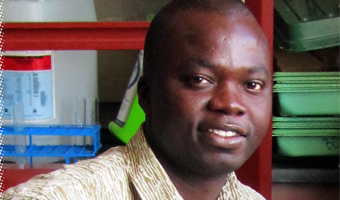Three Environmental and Plant Biology graduate students are presenting their dissertation research this semester.
- Alexander Anning, McCarthy lab, Wednesday, Oct. 30, 2 p.m., Porter 417
- Kaiyu Shen, Wyatt lab, Wednesday, Nov. 13, 9:30 a.m., Porter 429
-
Jeremy Keene, Ballard lab, Friday, Nov. 15, 11:50 a.m., Porter 104
Shen title is “Gravitropic Signal Transduction: A Systems Approach to Gene Discovery.” Visit his webpage.
Abstract: Gravity is an important stimulus for plants. Gravitropism, the plants’ response to gravity, can be divided into three phases: gravity perception, signal transduction and response. Various theories have been proposed to explain the process of gravitropism, yet more genes are needed to elucidate the mechanism of gravitropic signal transduction. A transcriptome analysis, in combination with the Gravity Persistent Signal treatment, was performed to specifically study the genes involved in signal transduction. A list of differentially expressed genes was discovered, and five selected for further physiological validation. In addition to the standard analysis of differentially expressed genes, a systematic approach was adopted to uncover more gravity related genes. A semi-supervised learning method was applied to find novel gravity genes. This learning method took a set of known gravity genes as well as a collection of heterogeneous annotation features as input and generated a list of genes that are functionally related to gravity signal transduction. Based on the list of gravity related genes, a potential interaction network was predicted based two approaches: a dynamic Bayesian network and a time-lagged correlation coefficient. The intersection of these networks was further investigated for hub and bottleneck genes. Such an approach provides a framework to extend current research in a more comprehensive manner.
Anning’s dissertation was on “Prescribed Fire and Thinning Effects on Tree Growth and Carbon Sequestration in Mixed-Oak Forests of Ohio.” Visit his webpage.
Abstract: Prescribed fire and thinning are commonly used as part of an integrated forest management strategy across the United States, spurring many studies into how these treatments influence forest ecosystems. Despite a burgeoning literature on this topic, the response of residual trees has not been
thoroughly investigated. Using dendrochronology and other experimental techniques, I examined the long-term effects of prescribed fire and thinning on residual tree growth and carbon sequestration and their underlying mechanisms to understand the broader impacts of the treatments on mixed-mesophytic forest ecosystems. Key findings of the study include: (1) treatments caused considerable increase in tree growth, with mechanical thinning being the most effective, whilst prescribed fire had only a modest effect, (2) competition was the most important determinant of residual tree growth, exhibiting the greatest effect in the thin-only stands, (3) increase in soil moisture stress/demand negatively influenced tree growth, but this effect was more pronounced in the control stand than in the managed stands, where treatment effects became the main drivers of growth, (4) interspecific variations in tree growth response were evident, and (5) white oak δ13C declined over time, suggesting an increased discrimination against 13CO2 relative to 12CO2 and a reduction in water-use efficiency of the species, most likely related to changes in regional climate than to the treatments or microclimate. The results demonstrate that prescribed fire and thinning influence tree growth and forest productivity by creating heterogeneity (i.e., by altering the competitive status of trees) within and among stands, though responses may vary depending upon the species, soil moisture status, size, and topographic position of trees, among other factors. Understanding this structural complexity and other ecological consequences of the treatments requires long-term, spatially explicit, tree-based analysis of residual tree growth, along with regeneration and survival.






















Comments